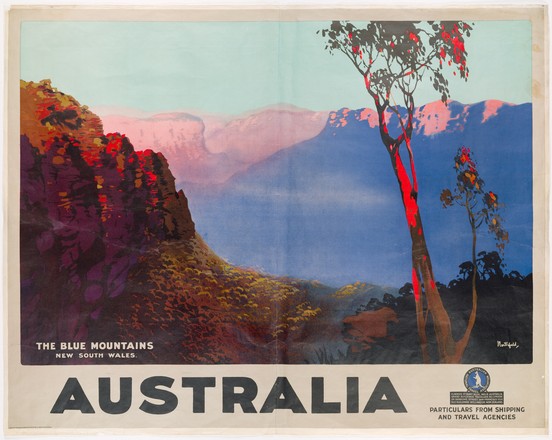
Australia, the Blue Mountains, New South Wales
Poster No. 11 produced by Northfield Studios and JE Hackett, Melbourne, Australia
for Australian National Travel Association, Melbourne ©James Northfield Heritage Art Trust
POSTERS/AUSTRALIA/25
Lithographic poster
for Australian National Travel Association, Melbourne ©James Northfield Heritage Art Trust
POSTERS/AUSTRALIA/25
Lithographic poster
Fine artist and commercial artist James Northfield (1887-1973) was one of Australia’s most celebrated poster artists. His prolific and innovative designs are built around excellent composition offset by an atmospheric light that beautifully captures the contrasts in the Australian landscape.
‘Australia, the Blue Mountains, New South Wales’ was commissioned by the Australian National Travel Association, and used in a 1930s Blue Mountains tourism advertising campaign.
This poster beautifully captures the dense bushland falling into the shadows of the sheer cliff faces that line the deep valleys at twilight. The contrast of soft and bright colours that reflect the light in the mountains at this time of day is subtly recorded.
These illustrations of New South Wales’ wild and wonderful landscapes were successfully used to lure tourists from Great Britain, United States, New Zealand and interstate up until 1950s.


 Back to list
Back to list